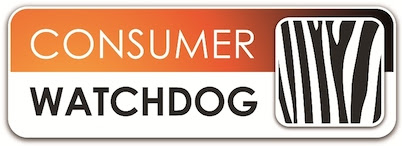I don’t like them for one simple reason. They simply don’t work. Their distributors will tell you that they’re a way of producing income. They might talk about supplementing your income, adding a little extra money on the side or even that it’s a full-time, wage-earning job but it’s simply not true. Their own figures prove this.
For instance, the latest data for Amway that I’ve seen was from Amway’s UK business for 2013 and it makes rather poor reading. It shows that in September 2013 they had 30,415 Retail Consultants, 13,141 Certified Retail Consultants and 81 Business Consultants in the UK. The average income figures for these groups were, I'm afraid, rather pathetic.
Retail Consultants had an average income of a mere £42 per month which is about P7,000 per year. Certified Retail Consultants averaged only about P18,000 per year and the very rare (fewer than one-fifth of one percent) Business Consultants brought in about P300,000. None of these people came even close to the UK’s average national income, not even the top earners.
Most importantly, these figures are income, not profits. They don't take account of the costs involved in running their little business, recruiting people beneath them, electricity and their phone and internet costs.
It’s the same with Herbalife. The figures for their US business in 2015 are just as miserable but they show how a MLM scheme really works.
80% of the members, over 400,000, are just people who buy their products and don't have a "downline". These are the people on the bottom rung of the pyramid. They buy stuff from Herbalife but there's no evidence they sell it to other people.
The most interesting group is those people who earned commission from their downline sales. These are the "Sales Leaders With a Downline" and in 2015 there were 68,768 of them in the USA. These are the people that Herbalife offer as examples of the riches you can earn from joining Herbalife.
But there are no riches. In fact, the 10% at the top of the pyramid take nearly 90% of all the money. At the other end of the scale, the bottom 90% earn just over 10% of the money. The group earning between $1 and $1,000 in 2015 (that's 62.5% of the entire group) actually earned an average of just $303.
And again that's their income, not their profit. That's before they paid their expenses, all the bills necessary to recruit all the people below them.
So yet again it's the same old story. If you want to make money from either Amway or Herbalife you need to be at the top of the pyramid and all the money you’ll earn will come directly from the people beneath you in the pyramid.
Now there comes some more news. Just last week the US Federal Trade Commission concluded a lengthy investigation of Herbalife and reported that Herbalife "have agreed to fully restructure their U.S. business operations and pay $200 million to compensate consumers to settle Federal Trade Commission charges that the companies deceived consumers into believing they could earn substantial money selling diet, nutritional supplement, and personal care products.”
That’s right, Herbalife will be paying $200 million to the distributors who fell for the sales hype that seduced them.
The investigation found a number of things wrong with the Herbalife business model. The report observed that the “overwhelming majority of Herbalife Distributors who pursue the business opportunity make little or no money, and a substantial percentage lose money” and that Herbalife “does not offer participants a viable retail-based business opportunity. Defendants’ compensation program incentivizes not retail sales, but the recruiting of additional participants who will fuel the enterprise by making wholesale purchases of product.”
The report (268kb pdf download) also gives examples of how absurd the Herbalife model can be. It reports that “during the years 2009–14, one top Distributor paid over $8 million for product (with a total Suggested Retail Price of over $16 million) which the Distributor purchased in the names of various downline members, thereby generating additional rewards and qualifying for higher payments from Defendants. This Distributor then donated all of this product to charity, rather than attempting to sell it. The Distributor generated enough rewards through these purchases to make a net profit, without even selling the products.”
The difference between a Multi-Level Marketing scheme and a pyramid scheme is usually explained by the absence of products in a pyramid scheme. The FTC report shows that even with Herbalife the products can be irrelevant. If you can give the products away to charity and still make a profit then you have to ask which of the two Herbalife really is.
The Chair of the FTC, Edith Ramirez said:
"This settlement will require Herbalife to fundamentally restructure its business so that participants are rewarded for what they sell, not how many people they recruit [...] Herbalife is going to have to start operating legitimately, making only truthful claims about how much money its members are likely to make, and it will have to compensate consumers for the losses they have suffered as a result of what we charge are unfair and deceptive practices."This ruling from the FTC is yet further proof that Herbalife, like many other Multi-Level Marketing schemes, are a very good way for some people to make a vast amount of money. The few at the top do very nicely but only at the expense of the many lower down the pyramid.
Unfortunately, this ruling only relates to Herbalife’s operations in the USA but I bet we’ll still see the effects here in Botswana. They’re going to have to find that $200 million somewhere and I suspect it’ll be the victims elsewhere in the world who’ll be pressurized to raise it. Expect to see Herbalife pushing its bogus business in your direction soon.
Hopefully you have a door that you can show them?


No comments:
Post a Comment